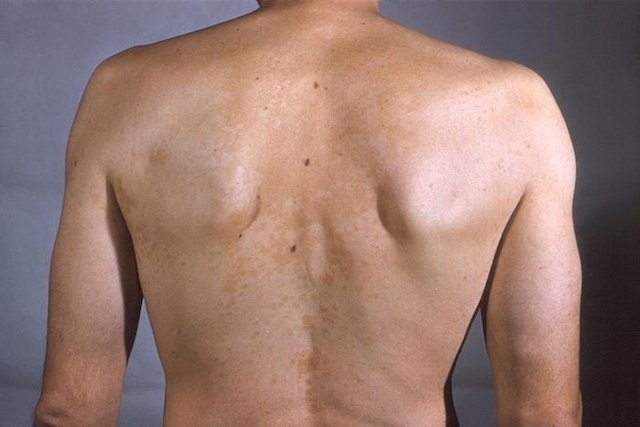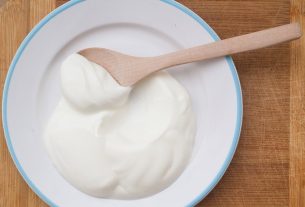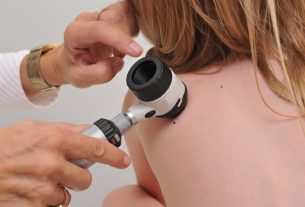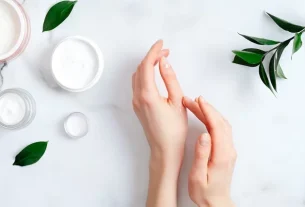The white spot on the skin may appear due to prolonged exposure to the sun or be a consequence of a fungal infection, for example, which can be easily treated with creams and ointments recommended by a dermatologist.
However, in some cases, white spots may indicate skin problems that require longer treatment, such as dermatitis, hypomelanosis or vitiligo, for example.
Therefore, when you notice the appearance of white spots on the skin, it is important to pay attention to their size, location and whether there are other symptoms, such as itching, dry skin or peeling skin. Furthermore, it is important that a dermatologist is consulted so that the spot can be assessed, the cause identified and the most appropriate treatment initiated.
What could be white spots on the skin?
To find out what could be causing your white spots on your skin, please answer the following questions:
This tool should only be used to try to identify the possible cause of white spots on the skin, and should not replace consultation with a doctor, who is the professional responsible for confirming the diagnosis and indicating appropriate treatment.
Main causes
The main causes of white spots on the skin are:
1. Skin ringworm
Skin mycosis, popularly known as white cloth or beach mycosis, is one of the main causes of white spots on the skin. Skin mycosis is a fungal infection that leads to the appearance of spots that may or may not itch and which can spread over large areas of the body.
Normally, the fungus that causes this mycosis naturally lives on the skin, but due to some alteration it can multiply and inhibit the production of melanin in the area, resulting in the white spot, which appears most frequently on the trunk and back.
What to do: It is recommended to apply an antifungal ointment recommended by the dermatologist, which can be Isoconazole, Ketoconazole or Miconazole, in addition to the use of shampoo, soaps and gels to complement the treatment. To prevent other people in the house from being affected, each person should use their own bath towel and not share their clothes. See some ointments used to treat ringworm.
2. Sun spots
White spots caused by the sun are more common in people with fair or dark skin, especially when sunscreen is not used. This is because after prolonged exposure to the sun, the skin may peel, giving rise to small white spots that appear on the arms, chest and back.
What to do: It is important to hydrate your skin daily, and always apply sunscreen before exposing yourself to the sun because this skin is thinner and more sensitive, with a greater risk of burning. The ideal is to hydrate your skin very well about 10 days before going to the beach and always eat foods rich in vitamin A such as carrots, tomatoes, boiled eggs, papaya and mango, for example, because the more hydrated your skin is, the lower the risk. peeling and becoming stained.
3. Atopic dermatitis
Atopic dermatitis is a type of skin inflammation that appears most frequently in babies, but can appear at any age. Normally, dermatitis causes the appearance of red spots, in plaques or lumps, but when they disappear they can leave the area whiter. See how to identify and treat atopic dermatitis.
What to do: It is normally necessary to use corticosteroid medications prescribed by the dermatologist, such as Fenirax, twice a day. In addition, you should keep your skin hydrated, and you may also need an antihistamine medicine to relieve itching.
4. White freckles
Light brown people can develop several small white freckles that can appear on their hands, arms or legs, especially after the age of 40. This usually happens in people who have very fair skin or who have spent many years exposing themselves to the sun without sunscreen. See more about white freckles.
What to do: It is advisable to adequately protect your skin from the sun by always using sunscreen when at the beach or pool, or whenever you are exposed directly to the sun for more than 15 minutes. Wearing gloves on your hands can also be useful to prevent the sun’s rays from aggravating skin injuries.
5. Vitiligo
Vitiligo is a disease that leads to the appearance of large white spots on the skin, which can even affect the inside of the mouth. Know how to identify the symptoms of vitiligo.
Its cause is not fully known but it is believed to occur due to a genetic change or due to some change in the immune system, where the body starts to fight melanocytes.
What to do: The doctor may recommend treatments such as phototherapy or the application of creams and ointments with corticosteroids and/or immunosuppressants, to understand the best option in each case. Discover the main treatment options for vitiligo.
6. Hipomelanose
Hypomelanosis, also known as mestizo hypomelanosis, is a situation in which some parts of the body are lighter than the person’s skin tone and, despite sun exposure improving contrast, the affected parts always remain lighter than the rest of the body. body. This type of skin change is more common in people who have some type of allergy.
What to do: Although it does not require any specific treatment, sun exposure in the early morning or late afternoon can be useful in trying to even out a person’s skin tone. See more about the treatment for hypomelanosis.
7. Tuberous sclerosis
Also known as Bourneville’s disease or just Epiloia, tuberous sclerosis is characterized by the appearance of isolated white spots that can affect any part of the body, although it is more common on the trunk. They are often identified for the first time in babies or children up to 6 years of age, and there may be just 1 or more than 100 spots spread across the body.
What to do: you should consult a dermatologist to confirm the diagnosis and start treatment to avoid complications such as seizures or even kidney problems. Understand better what tuberous sclerosis is and how it is treated.
8. Nutritional deficiencies
Decreased absorption or consumption of some vitamins and minerals can also lead to the appearance of white spots on the skin. The main vitamins and minerals that can lead to the appearance of white spots when they are found in low quantities in the body are calcium, vitamin D and E.
What to do: In these cases, it is important to change eating habits, giving preference to foods that are rich in these nutrients, such as milk and dairy products, sardines, butter and peanuts, for example.
9. Pitiríase alba
Pityriasis alba is a type of dermatosis that normally occurs in children and adolescents between 6 and 16 years old and is characterized by round or oval spots on the cheeks, arms and trunk, in some cases, which can itch. These spots are usually pink at first and then peel off, turning whitish. See more about pityriasis alba.
The cause of pityriasis alba is not entirely clear, however it may be related to atopic dermatitis, direct exposure to the sun or dry skin.
What to do: In general, pityriasis alba improves naturally after a few weeks or months. However, it is important to keep your skin hydrated by using post-white creams and lotions, showering with warm water to prevent dry skin, and using sunscreen to prevent dry skin. In some cases, the doctor may recommend the use of corticosteroid ointment to relieve inflammation and itching.

Sign up for our newsletter and stay up to date with exclusive news
that can transform your routine!
Warning: Undefined array key "title" in /home/storelat/public_html/wp-content/plugins/link-whisper-premium/templates/frontend/related-posts.php on line 12
Warning: Undefined array key "title_tag" in /home/storelat/public_html/wp-content/plugins/link-whisper-premium/templates/frontend/related-posts.php on line 13




